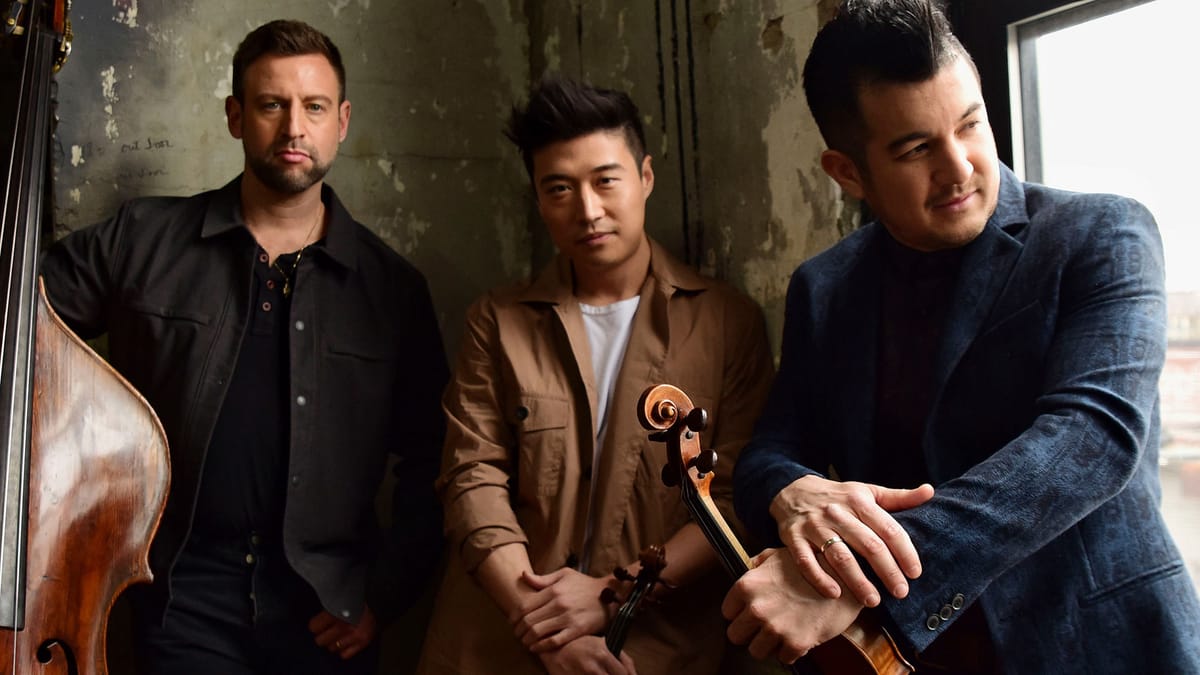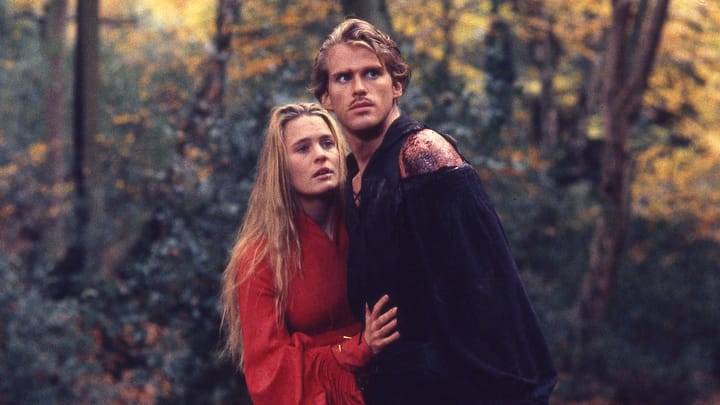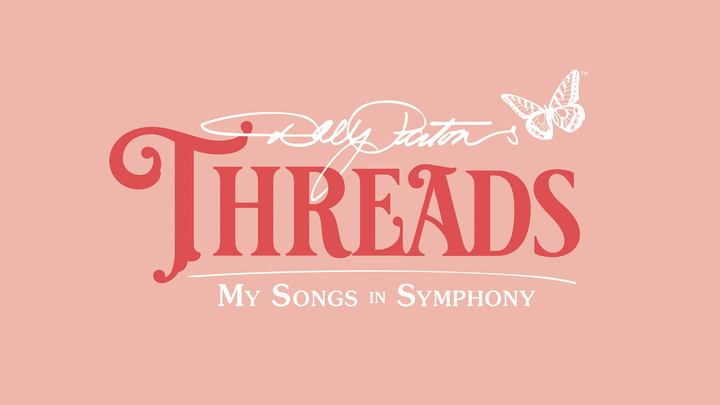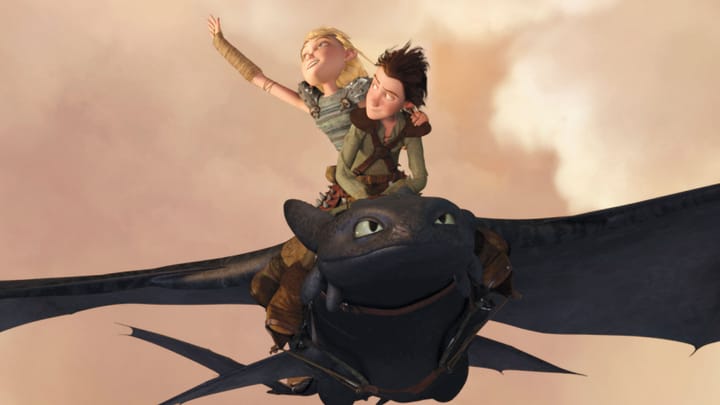In This Program
The Concert
Wednesday, July 23, 2025, at 7:30pm
Robert Moody conducting
Time for Three
Nicolas Kendall violin and vocals
Charles Yang violin and vocals
Ranaan Meyer double bass and vocals
Christopher Theofanidis
Rainbow Body (2000)
First San Francisco Symphony Performance
Mason Bates
Silicon Hymnal (2025)
Hypnotica
Phat reel
Air for Three–
Abide With Me–
Finale
San Francisco Symphony Commission and West Coast Premiere
Time for Three
Mason Bates electronica
Intermission
Leonard Bernstein
(Orch. Irwin Kostal & Sid Ramin)
Symphonic Dances from West Side Story (1957)
Prologue
Somewhere
Scherzo
Mambo
Cha-Cha
Meeting Scene
Cool Fugue
Rumble
Finale
The commissioning of Mason Bates’s Silicon Hymnal is supported by the Ralph I. Dorfman Commissioning Fund.
Program Notes
At a Glance
On the second half is Leonard Bernstein’s Symphonic Dances from West Side Story, which reorganized tunes from the show into a symphonic drama that transcends the traditional medley.
Rainbow Body
Christopher Theofanidis
Born: December 18, 1967, in Dallas
Work Composed: 2000
First San Francisco Symphony Performances
Instrumentation: 3 flutes (3rd doubling piccolo), 3 oboes, 3 clarinets (2nd doubling E-flat clarinet and 3rd doubling bass clarinet), 3 bassoons (3rd doubling contrabassoon), 4 horns, 3 trumpets, 3 trombones, tuba, timpani, percussion (triangle, crash cymbals, suspended cymbal, Chinese cymbal, large gong, claves, congas, bass drum, bells, chimes, and vibraphone), harp, piano, and strings
Duration: About 13 minutes
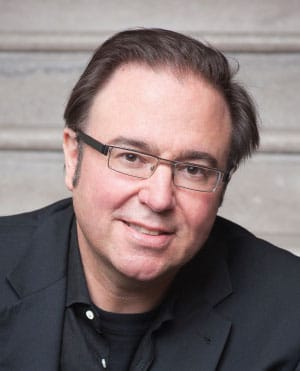
Christopher Theofanidis has had performances by many orchestras from around the world, including the London Symphony, New York Philharmonic, Philadelphia Orchestra, and Atlanta Symphony. He holds degrees from Yale University, the Eastman School of Music, and the University of Houston, and has been the recipient of the International Masterprize, the Rome Prize, a Guggenheim fellowship, a Fulbright fellowship to France, a Tanglewood fellowship, and two fellowships from the American Academy of Arts and Letters. In 2007 he was nominated for a Grammy Award for best composition for his chorus and orchestra work The Here and Now, and again in 2017 for his Bassoon Concerto. In 2011, San Francisco Opera gave the world premiere of his opera Heart of a Soldier. He is currently a professor at Yale University and composer-in-residence and co-director of the composition program at the Aspen Music Festival.
The Music
Rainbow Body has been one of the most performed new orchestral works of the new millennium, having been performed by more than 150 orchestras internationally since its premiere by the Houston Symphony with Robert Spano in April 2000. It originated from two ideas: the composer’s fascination with the 12th-century music of Hildegard of Bingen, and the Tibetan Buddhist idea of “rainbow body,” which posits that when an enlightened being physically dies, their body is absorbed directly back into the universe as energy or light. “This seemed to me to be a metaphor for Hildegard’s music,” Theofanidis said, continuing:
In the past few years I have been listening to the music of medieval mystic Hildegard von Bingen a great deal, and as simple and direct as this music is, I am constantly amazed by its staying power. Hildegard’s melodies have very memorable contours which set them apart from other chants of the period. They are wonderfully sensual and set up a very intimate communication with the divine. This work is based on one of her chants, Ave Maria, o auctrix vite (Hail Mary, source of life).
Rainbow Body begins in an understated, mysterious manner, calling attention to some of the key intervals and motives of the piece. When the primary melody enters for the first time about a minute into the work, I present it very directly in the strings without accompaniment. In the orchestration, I try to capture a halo around this melody, creating a wet acoustic by emphasizing the lingering reverberations one might hear in an old cathedral.
Although the piece is built essentially around fragments of the melody, I also return to the tune in its entirety several times throughout the work, as a kind of plateau of stability and peace within an otherwise turbulent environment. Rainbow Body has a very different sensibility from the Hildegard chant, with a structure that is dramatic and developmental, but I hope that it conveys at least a little of my love for the beauty and grace of her work. Rainbow Body is dedicated to Glen Rosenbaum, without whose support and encouragement I would not be composing.
Adapted from material provided by the composer.
Silicon Hymnal
Mason Bates
Born: January 23, 1977, in Philadelphia
Work Composed: 2025
San Francisco Symphony Commission and West Coast Premiere
Instrumentation: 2 solo violins, solo bass, 2 flutes (2nd doubling piccolo), 2 oboes, 2 clarinets, 2 bassoons (2nd doubling contrabassoon), 4 horns, 3 trumpets, 3 trombones, tuba, timpani, percussion, harp, piano (doubling celesta), electronica (laptop),
and strings
Duration: About 27 minutes
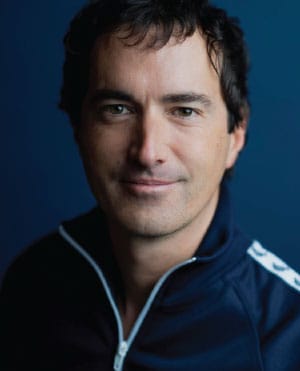
Mason Bates is among today’s most performed composers of orchestral music, known for his propulsive beats and shimmering textures. Many of his works merge acoustic instruments with electronic sounds, often examining the intersection of technology and creativity.
In 2017, his opera The (R)evolution of Steve Jobs premiered at Santa Fe Opera and later won the Grammy Award for best opera recording. He has served as the first composer-in-residence at the Kennedy Center and as a composer-in-residence for the Chicago Symphony. He is currently also artist-in-residence at Grace Cathedral.
As DJ Masonic, Bates spins beats in nightclubs around the country, and he is the creator and artistic director of Mercury Soul, an organization that presents classical music to new audiences by melding it with electronica and stagecraft. He is currently at work on The Amazing Adventures of Kavalier & Clay, an opera based on the novel by Michael Chabon, which will debut at Indiana University and the Metropolitan Opera next season.
Bates has enjoyed a long history with the San Francisco Symphony, beginning in 2009. The Symphony has since commissioned and performed several of his works and released a Grammy-nominated all-Bates album on SFS Media led by Michael Tilson Thomas.
Born in Philadelphia and raised in Richmond, Virginia, Bates grew up studying piano, began composing by high school, and received his first commission before college. He attended Columbia University and the Juilliard School, earning degrees in English literature and composition. Moving to the Bay Area, he received a PhD in music from the University of California, Berkeley, and now serves on the composition faculty of the San Francisco Conservatory. He is the recipient of awards including the Rome Prize, a Guggenheim Fellowship, and an American Academy in Berlin Fellowship.
The Music
Silicon Hymnal was commissioned by the San Francisco Symphony, Arizona MusicFest, Brevard Music Center, Louisville Orchestra, Nashville Symphony, Saratoga Performing Arts Center, Sioux City Symphony, and Sun Valley Music Festival. Bates writes:
The Silicon Hymnal is a book of songs with a heart of electronica. Created for the uniquely gifted Time for Three, whose members can play (and sing) in any style, this triple concerto unfolds in progressively more expansive movements.
“Hypnotica” mixes meditative textures between soloists, orchestra, and electronica, drifting in and out of focus in a dreamlike manner. The ensuing “Phat reel” combines a heavy beat (‘phat’ in hip-hop parlance) with a reimagined fiddle reel—a jaunty folk tune of Scottish origins—in a lopsided dance that swaps violin for mandolin. “Air for three” floats a double bass melody over airy violin textures and jazz harmonies.
The work takes a deep dive in “Abide with me,” an atmospheric recasting of the 19th-century hymn known for its plaintive calls for guidance amidst the darkness of “eventide.” At the most vulnerable moment in the movement, the soloists are called to sing the hymn itself.
All thematic elements return in the barnburner finale, making boisterous cameos over an engine of perpetual motion. Analogue and digital figuration swirl together in an exuberant close.
—Benjamin Pesetsky
Symphonic Dances from West Side Story
Leonard Bernstein
(Orch. Irwin Kostal & Sid Ramin)
Born: August 25, 1918, in Lawrence, Massachusetts
Died: October 14, 1990, in New York
Work Composed: 1957
San Francisco Symphony Performances: First—May 1971.
Seiji Ozawa conducted. Most recent—August 2022. Teddy Abrams conducted.
Instrumentation: 3 flutes (3rd doubling piccolo), 2 oboes, English horn, 2 clarinets, bass clarinet, E-flat clarinet, 2 bassoons, contrabassoon, alto saxophone, 4 horns, 3 trumpets, 3 trombones, tuba, timpani, percussion (triangle, cowbell, chimes, cymbals, suspended cymbals, finger cymbals, tam-tam, tambourine, snare drum, tenor drum, tom-toms, pitched drums, bass drum, timbales, conga drum, bongo drums, drum set, gourd, guiro, maracas, police whistle, wood block, vibraphone, glockenspiel, and xylophone), harp, piano (doubling celesta), and strings
Duration: About 23 minutes
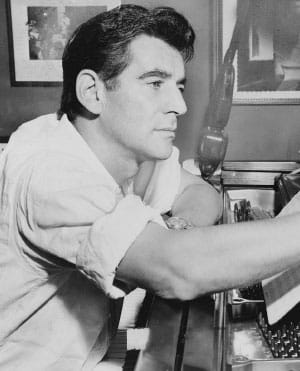
In August 1957, when Leonard Bernstein signed a contract to become the next conductor of the New York Philharmonic, he was also preparing to open West Side Story. Writing to his wife Felicia, who was in Chile, he reported: “I signed the Philharmonic contract. . . . Big moment. . . . Other events—nothing but the show. We ran through today for the first time, and the problems are many, varied, overwhelming; but we’ve got a show there, and just possibly a great one.”
Three-and-a-half years later, in February 1961, the Philharmonic premiered Symphonic Dances from West Side Story on a gala concert called “A Valentine for Leonard Bernstein,” celebrating the extension of his contract with the orchestra. In between, the musical had run 732 performances on Broadway, toured the United States, returned to New York for another 249 performances, had an Original Broadway Cast album released, and begun development into a film. Bernstein, meanwhile, had been promoted from the Philharmonic’s joint principal conductor (alongside outgoing maestro Dimitri Mitropoulos) to its full-fledged music director, and become a television star through the Philharmonic’s Young People’s Concerts.
This was the peak Bernstein era, which began with his November 1943 podium debut with the Philharmonic, stepping in to replace Bruno Walter. As a composer, Bernstein had already created the ballet Fancy Free with choreographer Jerome Robbins, elaborated it into the musical On the Town, written the opera Trouble in Tahiti, scored the Marlon Brando picture On the Waterfront, and begun the operetta Candide. The idea for West Side Story—a musical update of Romeo and Juliet set among New York City gangs—had been simmering for most of a decade, with the concept and choreography by Robbins and a book by Arthur Laurents. Finally, the last piece fell in place when Stephen Sondheim joined as lyricist.
At the 1961 Philharmonic gala, most of the Carnegie Hall audience had probably seen West Side Story, owned the record, and could hum its tunes from “Jet Song” to “A Boy Like That.” But Bernstein, working with orchestrators Sid Ramin and Irwin Kostal, wanted to do more than a medley of hits for this special concert. They took dance numbers and just a few lyrical snippets, reordering them “according to alternating high and low levels of emotional intensities,” as Bernstein’s assistant, Jack Gottlieb, observed. The result is seamless—like a blurred memory of the musical.
In his program note for the premiere, later reprinted as a preface to the published score, Gottlieb wrote: “Why are these [dances] called symphonic? Simply because the dance music, even in its original format, is symphonically conceived . . . This is music on its own terms, music that does not have to depend upon presupposed knowledge of the unfolding events.” He did, however, go on to describe correspondences with the musical’s plot.
The Prologue (Allegro moderato) establishes a recurring interval—the dissonant tritone—which can signal instability and danger, but also yearning (as in “Maria”). In Gottlieb’s description, the introduction shows “the growing rivalry between two teenage street gangs, the Jets and Sharks,” ending with a police whistle.
“Somewhere” (Adagio), with lyrical strings accompanied by lilting harp and piano, is “a visionary dance sequence, [where] the two gangs are united in friendship.” The Scherzo (Vivace e leggiero) turns folksy with pizzicato strings and chirping woodwinds—“In the same dream, they break through the city walls and suddenly find themselves in a world of space, air, and sun.”
The dream is interrupted by drums. . . brass. . . and Mambo! “Reality again; competitive dance between the gangs.” The Cha-cha (Andantino con grazia) is lighter and coy, as “the star-crossed lovers see each other for the first time and dance together.” Sugary violins, celesta, and vibraphone score the alluring Meeting Scene (Meno mosso) between Tony and Maria.
The Cool Fugue (Allegretto) swings into a pile-on as “the Jets practice controlling their hostility”—with little success. The Rumble (Molto allegro) is fueled by a propulsive piano riff and squawking brass that all breaks down in a “climactic gang battle during which the two gang leaders are killed.” A mournful flute cadenza surveys the carnage, leading to the Finale (Adagio)—“Love music developing into a procession, which recalls, in tragic reality, the vision of ‘Somewhere.’”
—B.P.
About the Artists
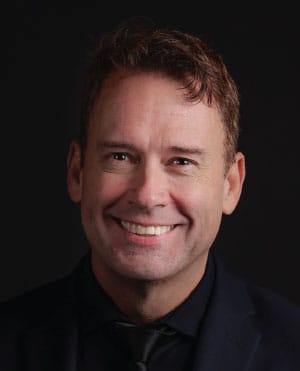
Robert Moody
Robert Moody recently marked his ninth season as music director of the Memphis Symphony and 18th season as music director of Arizona Musicfest, and was named music director of the Baltimore Chamber Orchestra last year. In 2022, he was invited to conduct the Lakeland (Florida) Symphony in a gala concert with Renée Fleming, and was subsequently named their principal opera conductor.
Moody was previously music director of both the Portland (Maine) Symphony and the Winston-Salem (North Carolina) Symphony. Earlier in his career, he held conducting positions with the Phoenix Symphony, Evansville Philharmonic, Santa Fe Opera, Brevard Music Center, Interschool Orchestras of New York City, and apprenticed at Landestheater Opera in Linz, Austria.
During the 2024–25 season, Moody debuted with the Lyric Opera of Kansas City and Tulsa Opera, both in performances with Renée Fleming; the Tampere Philharmonic and Romania’s Filarmonica Banatul; and returned to conduct the Portland and Greensboro symphonies. He also led the Los Angeles Philharmonic, Chicago Symphony, Minnesota Orchestra, Dallas Symphony, Houston Symphony, Washington National Opera, and Toronto Symphony. He makes his San Francisco Symphony debut with this performance.
Moody is a close friend and collaborator of Mason Bates and was the first conductor to commission a full orchestral work from the composer. A South Carolina native, he holds degrees from Furman University and the Eastman School of Music.
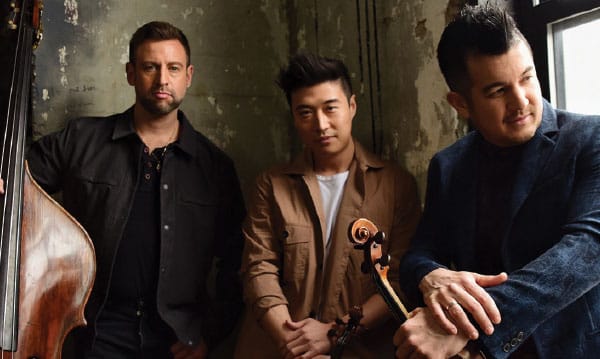
Time for Three
The Grammy and Emmy-winning ensemble Time for Three (TF3) defies convention and boundaries by showcasing excellence across different genres, including classical music, Americana, and singer-songwriter. Their unique sound captivates audiences, immersing them in a musical experience that merges various eras, styles, and traditions of Western music. TF3, consisting of Charles Yang, Nicolas “Nick” Kendall, and Ranaan Meyer, combines their instruments and voices in a remarkable sound, establishing a distinct voice of expression that resonates with listeners worldwide.
TF3’s longstanding history of collaboration with contemporary classical composers continues to thrive. They have worked closely with as Chris Brubeck and Pulitzer Prize–winners William Bolcom and Jennifer Higdon. Their recent commission Contact, composed by Pulitzer Prize–winner Kevin Puts, premiered with the San Francisco Symphony and the Philadelphia Orchestra in the summer of 2022, and was released on Deutsche Grammophon under the album title Letters for the Future.
TF3 has performed at Carnegie Hall, the Kennedy Center, and Royal Albert Hall, as well as at intimate venues like Joe’s Pub and Yoshi’s. Their collaborations span a diverse range of artists, including Ben Folds, Branford Marsalis, Joshua Bell, Aoife O’Donovan, Natasha Bedingfield, and Arlo Guthrie.
TF3’s exceptional talents have not only earned them a Grammy win but also secured them an Emmy for their concert special, Time for Three In Concert, produced by PBS. Their appetite for new experiences led them to collaborate with cellist and composer Ben Sollee, creating the soundtrack for Focus Features’ film Land, directed by Robin Wright. They made their San Francisco Symphony debut in July 2006.

